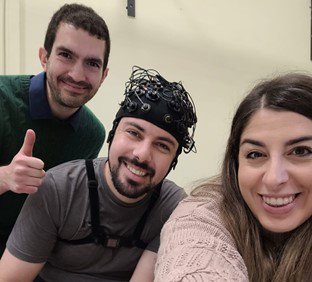How does the frontal lobe control turns & walking?
Falls are the second leading caused of injury and death globally. Turning while walking may cause falls due to greater demands on motor control.
Falls are the 2nd leading cause of unintentional injury and death worldwide, with most falls occurring while walking. The risk of falling may be exacerbated during turns (nearly 50% of all walking steps occur during turns), such as when walking through hallways, entering doorways perpendicular to our walking direction, and when encountering obstacles. The higher fall risk during turning may be due to the increased challenge placed on the central nervous system to maintain balance and effectively coordinate the multiple segments of the human body.
Specifically, movement coordination and postural adjustments required to perform safe turns may increase the demand on brain regions responsible for motor planning, defined as a set of motor commands that are intended to accommodate task specific goals and are mapped out prior to movement initiation.
A Collaboration Between CDHSI and University of Rome "Foro Italico"
Thus, in a new collaboration between the CDHSI and the University of Rome “Foro Italico”, during a research exchange in Rome, we examined if changes occurred in Prefrontal cortical activity during pre-planned and spontaneous turning while walking. This project utilized body-worn accelerometers to track human movement and the Functional Near-Infrared Spectroscopy (fNIRS) to capture changes in brain activity. This project is a first step in understanding how the motor system controls walking balance to avoid falls in activities of daily living.
